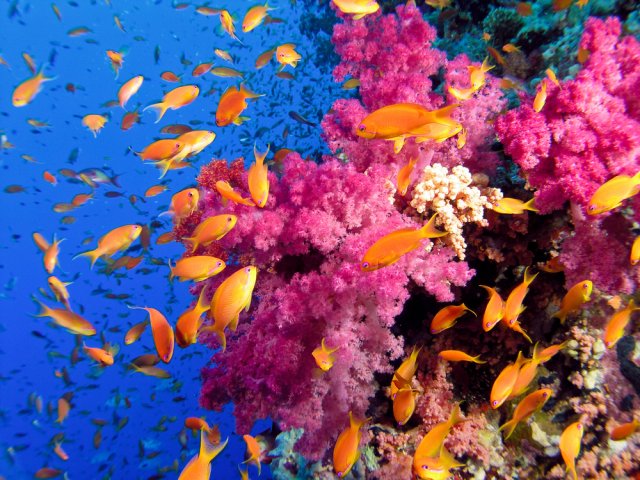
The Queensland government's Reef Water Quality Protection Plan released its Report Card 2014 on September 21. It states, “Results show the need to accelerate the rate of change and drive innovation to meet the ambitious targets.”
Queensland Environment Minister Steven Miles, who released the report, said there was more bad news than good in the report.
“If one of my kids came home with a report card like this, I'd be a bit disappointed,” he said.
“What is most disturbing is these results are far from our targets, and progress to these targets flatlined in the period 2013-2014 … [The report] does show that progress on meeting our targets had stalled, and that UNESCO's interest was the right thing; that they were right to be concerned that progress had stalled, because now we know it had,” he said.
“The reef report card found despite it avoiding an 'in danger' listing from Unesco’s world heritage committee in July, inshore areas are undeniably in a bad shape throughout the 2,300km-long ecosystem,” the September 21 Guardian said.
The report card said that both sea grass beds and inshore coral reefs “remained in poor condition overall”.
While there had been reductions in the amount of chemicals flowing onto the reef from agriculture, “the report found only 13% of Queensland sugar cane producers had adopted 'best management practice' in terms of nutrients, with only 30% using best practice with pesticides. Only 28% of graziers were managing their pastures properly to protect the reef, the report found,” the Guardian said.
The report card said 330 hectares of reef wetlands and 30,980 hectares of riverbank vegetation was lost between 2009 and 2013.
“There are some trends that are improving but more needs to be done,” chairperson of the scientific panel responsible for the report card, Roger Shaw, told Guardian on September 21.
“We know the pollutant levels exceed the guidelines so we need to bring them back down. The inshore area is still recovering from major floods we had in 2010 and 2011. Climate change is still the number one threat but I’d add climate variability too — if we have extreme events in a short period of time, there is less capacity for coral to deal with other stressors.”
“The figures in the reef report card represent a clear fail for current programs,” WWF spokesperson Sean Hoobin told the Guardian.
“Governments have promised to give the reef the clean water it needs to recover by 2025 — to meet this commitment they will need to overhaul current programs, and provide significant additional resources.
“Key first steps are to enforce existing regulations to stop overuse of fertilisers. Leading farmers are showing that it is possible to achieve big reductions in fertiliser pollution while still being profitable.”
The Water Quality Protection Plan needs to be seen within the context of Reef 2050 Long-Term Sustainability Plan (which incorporates water quality).
In a formal response to the Reef 2050 plan in 2014, the Australian Academy of Science stated that the strategy is “inadequate to achieve the goal of restoring or even maintaining the diminished outstanding universal value of the reef”, noting there was “no adequate recognition” of the importance of curbing greenhouse gas emissions.
Professor Terry Hughes, director of the Australian Research Council Centre of Excellence for Coral Reef Studies and an academy fellow, told the October 28, 2014 Guardian: “There’s nothing in the plan on addressing climate change. The science is quite clear that you can’t keep the Great Barrier Reef in good condition if you’re going to develop huge coal reserves. We are already on our way to 2°C warming and unless Australia cuts back on carbon dioxide emissions we won’t have much of a Great Barrier Reef left.”
The day after the release of report card 2014 the federal government announced in Cairns the $32 million research hub, which will be led by the Reef and Rainforest Research Centre and James Cook University researcher Dr Damien Burrows, to connect scientists, policymakers and communities to deliver a research program that provides practical solutions to maintaining and improving water quality, the September 22 Cairns Post said.
One of the research projects highlighted was the development of a tradable permit scheme for cost-effective reduction of nitrogen run-off in sugarcane reef catchments. Market mechanisms are unlikely to lead to improved water quality. Enforcement of existing penalties against polluters are preferable responses.
The Australian Marine Conservation Society welcomed the federal government’s announcement of the Tropical Water Quality Hub in a September 22 media release, but warned of other dangers, including global warming and “unbridled industrialisation of the Reef”.
AMCS Great Barrier Reef campaigner Gemma Plesman said: “While the Reef Trust will help address water quality, other significant challenges remain.
“The unbridled industrialisation of the Reef presents further risks that will not be addressed with this announcement.
“More needs to be done, including rejecting the coal port proposal for Abbot Point which includes massive amounts of dredging that could put nesting turtles under even greater risk.
“Despite all of the evidence of risk to the Reef, the state and federal Governments are still pushing ahead with their plans for the Abbot Point coal port expansion.
“Water quality is only one piece of the puzzle. Abbot Point presents further risks to this natural wonder.
“The expansion would see 1.1 million cubic metres of the Great Barrier Reef World Heritage Area dredged and then dumped on land adjacent to the internationally significant Caley Valley Wetlands which support 40,000 birds in a good wet season.
“This project would also mean an extra 390 coal ships crossing the Reef each year, increasing the potential for devastating oil spills.
“The Abbot Point expansion would also enable a dramatic increase in the mining and burning of coal which contributes to global warming and places even greater pressure on this fragile ecosystem,” Plesman said.
Like the article? Subscribe to Green Left now! You can also like us on Facebook and follow us on Twitter.